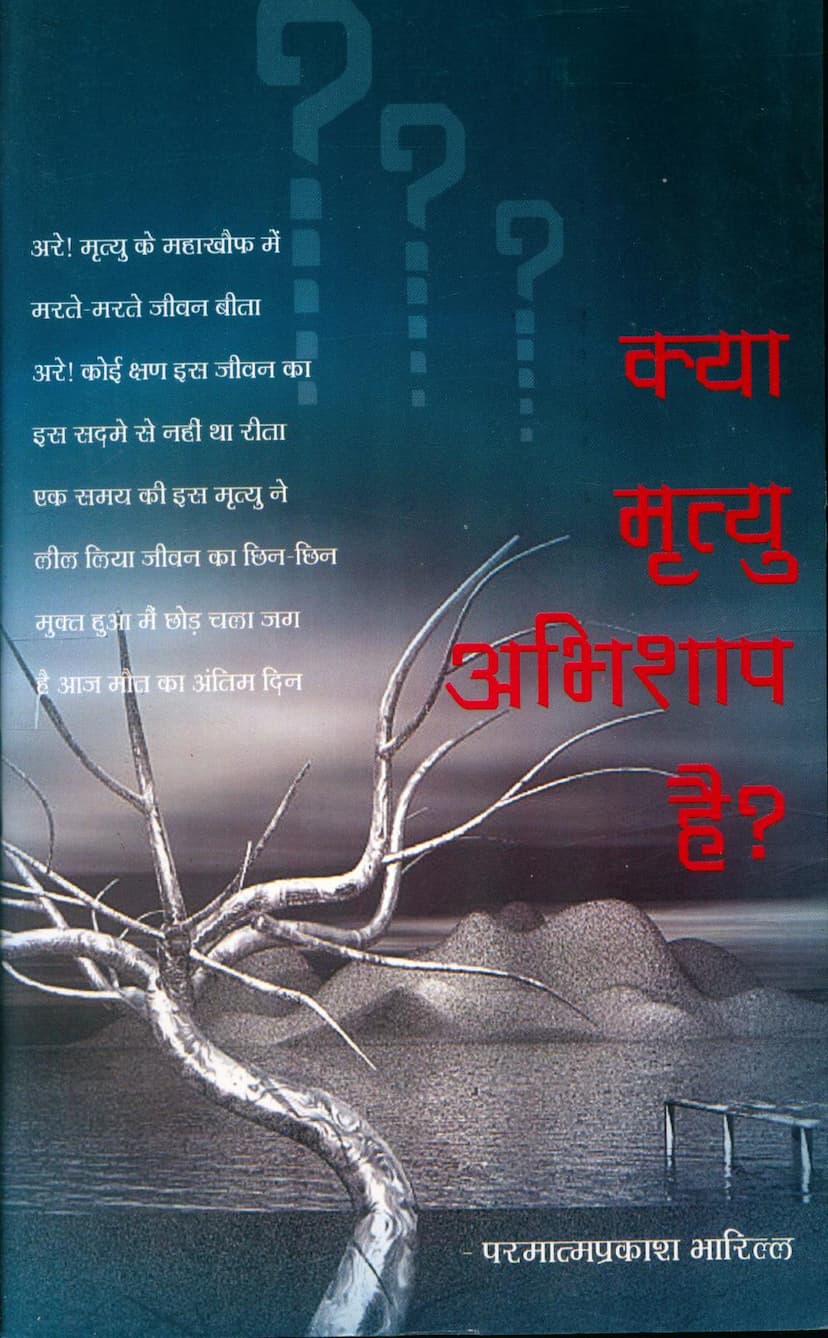Kya Mrutyu Abhishap Hai
Added to library: September 2, 2025

Summary
Here's a comprehensive summary of the Jain text "Kya Mrutyu Abhishap Hai" (Is Death a Curse?) by Parmatmaprakash Bharilla, based on the provided pages:
Overall Theme: The book fundamentally challenges the common perception of death as a curse or a dreadful event. It argues that death, from a Jain philosophical perspective, should be viewed as a natural, even auspicious, transition – a "Maha-utsav" (great festival) – rather than a cause for sorrow and lamentation. The author emphasizes the importance of understanding the true nature of death to live a meaningful life and achieve spiritual liberation.
Key Arguments and Concepts:
- Death as a Natural Transition, Not a Curse: The central thesis is that death is not an end but a transformation. Just as we change clothes or move to a new house, the soul (Atman) changes bodies. The fear and sorrow associated with death stem from ignorance and attachment, not the act of dying itself.
- The Analogy of Changing Clothes: The author frequently uses the analogy of changing old, worn-out clothes for new ones to illustrate the soul's transmigration. This emphasizes the cyclical nature of birth and death and the opportunity for renewal.
- The Inevitability and Purpose of Death: While unavoidable, death serves a purpose. It allows the soul to shed a decaying body and acquire a new, fresh one. The fear of death is contrasted with the lack of concern for the certainty of death, while being overly confident about the uncertainty of life.
- The Flaws in Fearing Death: The book critiques the human tendency to fear death and try to evade it, while simultaneously not preparing for it. It highlights the paradox of chasing transient worldly pleasures while neglecting the eternal nature of the soul and its future.
- Critique of Materialistic Pursuits: The author criticizes the obsessive pursuit of wealth and worldly possessions, which are ultimately left behind at death. The karmic consequences of actions, however, continue to bind the soul.
- The Interconnectedness of Birth and Death: Birth and death are presented as two inseparable parts of the same cycle. If death were eliminated, it would necessitate the complete cessation of birth, leading to stagnation and an aging population.
- The Flawed Desire for Immortality: The desire for personal immortality is seen as unrealistic and ultimately undesirable. Even if achieved, it would lead to witnessing loved ones pass away, and the problem of generational gaps would become insurmountable.
- Death as an Opportunity for a "Maha-utsav": By understanding death as a natural process and an opportunity to gain a new, healthier body, the transition can be transformed from a somber event into a joyous "Maha-utsav." This requires a shift in perspective and preparation.
- The Role of Science vs. Religion/Spirituality: The second essay, "Can Science Be the Criterion for Religion?", argues that science, while valuable in its domain, cannot be the sole arbiter of religious and spiritual truths. Religion is presented as an ancient, systematic "Vitraag-Vigyan" (science of non-attachment) that deals with the soul and its nature, which are beyond the scope of materialistic science.
- The Limitations of Materialistic Science: The author points out that science is still evolving and often proves itself wrong. Furthermore, materialistic science has produced destructive capabilities and is often driven by economic and political interests, making it unsuitable as a sole judge of spiritual matters.
- The True Nature of Religion: Religion is not about outward rituals or historical/geographical facts but about understanding the fundamental nature of reality and the soul. Spirituality is presented as the true "science" of the self.
- The Need for Spiritual Inquiry: The book encourages readers to question, seek answers to existential questions (about the soul, God, karma, rebirth), and not postpone this inquiry. The answers to these questions are crucial for understanding life's purpose and direction.
- The Limitations of Materialistic Efforts: The author critiques the human tendency to delay spiritual seeking until old age, pointing out the unreliability of old age for making such profound changes and the uncertainty of even reaching old age.
- Karma and its Consequences: The book emphasizes that actions (karma) have consequences, and these consequences bind the soul. It discusses the human desire to escape the fruits of one's actions through various means, leading to the concept of divine intervention or reliance on intermediaries.
- The Need for Self-Reliance in Spirituality: The author criticizes the tendency to seek external saviors or intermediaries to escape karmic consequences, highlighting that true liberation comes from understanding the nature of the soul and its inherent potential.
- The Limitations of Tradition and Superficial Faith: The book suggests that many people hold superficial beliefs or follow traditions without deep understanding or conviction. They may be "Dharmabheeru" (fearful of religion) rather than "Dharmatma" (religious practitioners).
- The Difference Between a Body Part and an Ornament: Religion is compared to an essential body part, while superficial beliefs are like ornaments. The former is integral and cannot be separated, while the latter is optional and often for show.
- The Path to Understanding: True spiritual understanding comes not from external validation (like scientific proof) but from direct experience and introspection, a process akin to scientific research but within the realm of the soul.
- The Author's Intent: The author's intention is to spark contemplation and guide readers toward a more meaningful understanding of life, death, and spirituality. He believes that a life lived with spiritual awareness will naturally lead to an auspicious death and rebirth.
In essence, "Kya Mrutyu Abhishap Hai" is a profound Jain philosophical exploration that urges a radical re-evaluation of death. It advocates for a shift from fear to understanding, from attachment to detachment, and from materialistic pursuits to spiritual realization. By embracing the truth of the soul's eternal nature and the cyclical process of existence, one can transform the experience of death into a moment of liberation and celebration.